The northern cardinal is one of the most recognized and beloved birds in North America – and more people can see them now than ever, as their range has expanded steadily north over the past 100 years.
The splash of red of a male cardinal against snow or an evergreen tree is one of those everyday wonders that delights even people who aren’t into birds. The northern cardinal is one of the few backyard birds deemed worthy of sports mascot status. It is the state bird of seven states. It is featured on everything from holiday cards to expensive paintings.
Many male birds develop bright, gaudy plumage during the breeding season, but moult those showy feathers for duller colors at other times of the year. Not the cardinal. While research has shown that brighter-red males have higher breeding success, and secure prime nesting locations in dense bushes, the cardinal is red even when moulting. (Females are a much more subdued pale brown, although they do exhibit reddish highlights).
The northern cardinal’s spread north has been documented for decades. A 1960 report noted that cardinals first nested in southern Connecticut around 1943, and in eastern Massachusetts in 1958. It also noted that the bird became firmly established in parts of New York, and that its populations increased in northeast Pennsylvania and New Jersey.
The northern cardinal has continued its spread. Over the past 30 years, it has become a resident bird in Northern Minnesota, Maine and southern Canada. This spread has been well-documented thanks to Project FeederWatch, a citizen science program of the Cornell Lab of Ornithology.
Project FeederWatch participants began recording backyard birds in 1987; today, more than 20,000 citizen scientists participate. The program has helped document numerous trends for bird species, including the spread of the cardinal.
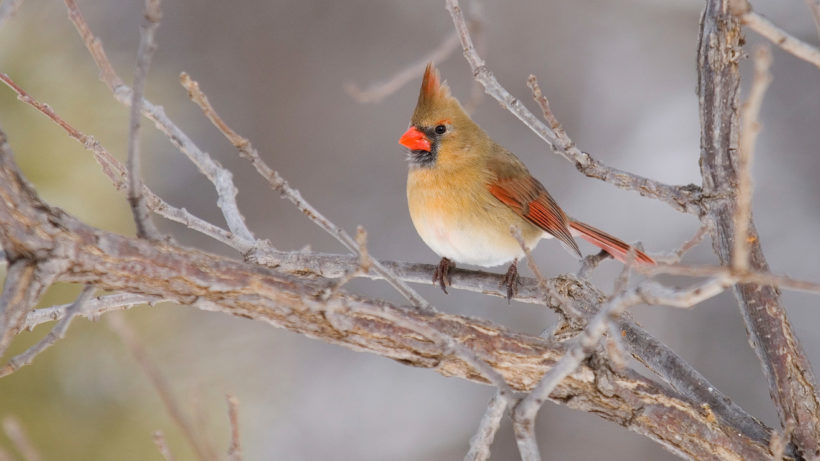
Why has the northern cardinal been so successful?
A common idea is that it has spread north due to climate change. Certainly milder winters have aided some species that have trouble thriving in cold weather (like Carolina wrens). And heavy snows could make it more difficult for cardinals to forage for seeds.
But, in this case, the more likely answer is related to habitat and food. Anywhere in the northern cardinal’s range – from eastern forests to Arizona desert scrub – you will most likely encounter them on habitat edges. In Pennsylvania, I could count on seeing them wherever a woodlot bordered a field.
The 1960 report noted that cardinals increased when southern New England farms were abandoned, creating wild fields and young forest. Similarly, suburbia creates a lot of edge habitats. Yards with shrubs and bushes provide ideal cardinal habitat.
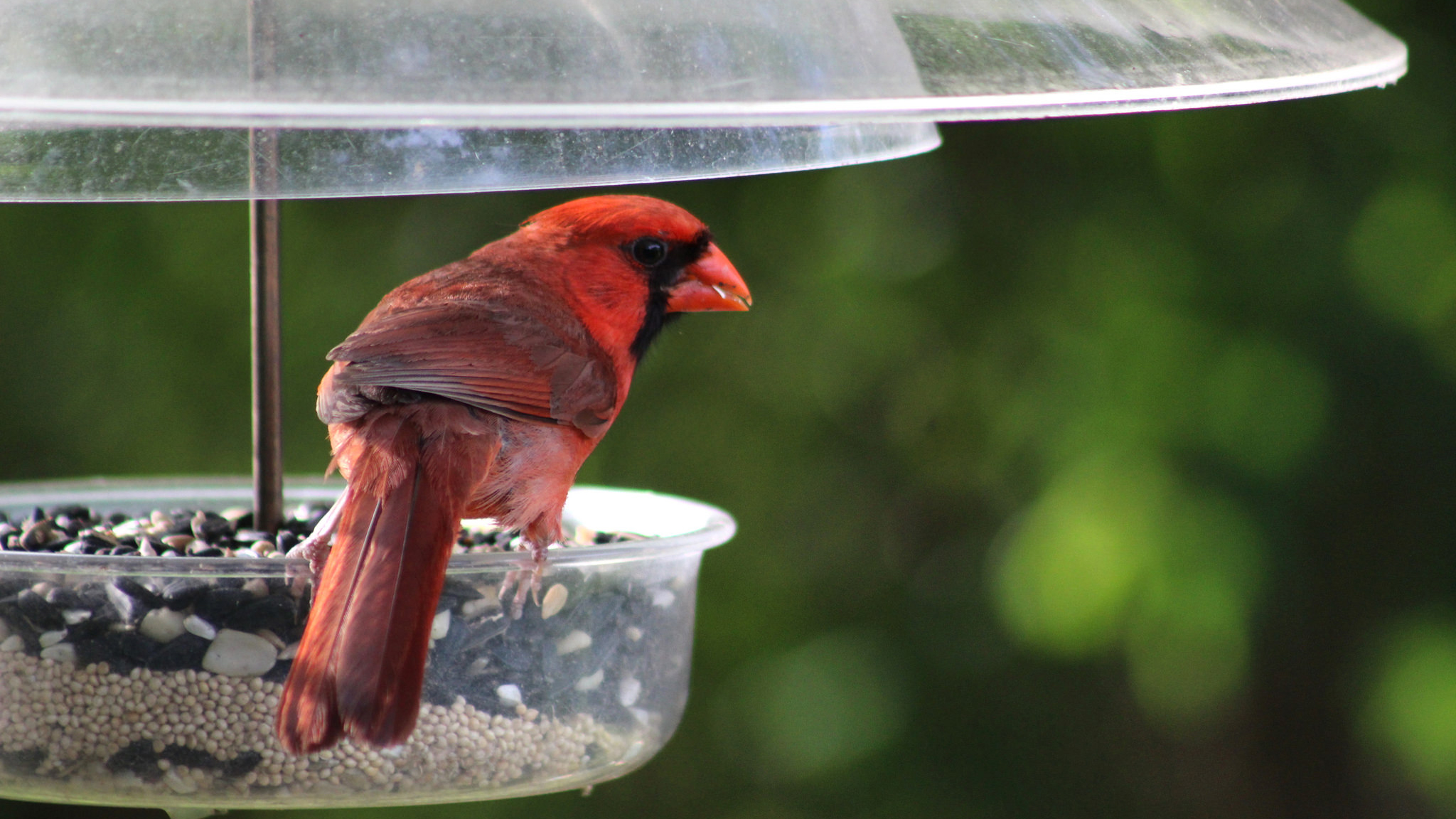
And then there’s bird feeding. According to Cornell, more than 50 million people feed birds in the United States, making it arguably the most popular nature-based hobby. That feed provides a lot of calories to help cardinals make it through the winter. Cardinals have a particular fondness for sunflower seeds, one of the most popular ingredients in backyard feeders.
Who doesn’t love seeing a cardinal at the feeder? As a story in Audubon stated, no one gets tired of looking at them. Drawing in cardinals may even encourage residents to continue putting out seed, thus creating a continued bonanza for cardinals.
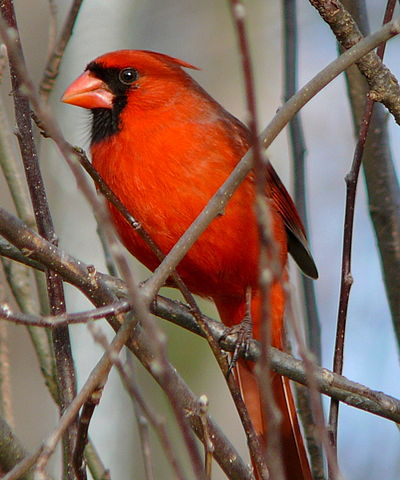
The Cornell Lab, in an article reporting on notable trends from Project FeederWatch data, attributes the cardinal’s expansion to these two factors: “More people have bird feeders now than 30 years ago, and more people have landscaped their yards and added shrubbery, which provide fruit for food and shelter for nesting habitat and cover in winter.”
Project FeederWatch has documented other species that have expanded or changed habits. More Cooper’s hawks, for instance, are not migrating, instead choosing to stay in suburban neighborhoods. The reason? The abundant songbirds at your bird feeder. They aren’t going to pass up an easy and reliable food source.
Citizen scientists have recorded the rapid spread of Eurasian collared doves across North America, and the decline and disappearance of evening grosbeaks across much of their range.
Project FeederWatch and similar programs add more fun and depth to your backyard bird watching. You don’t need to be an expert, and your observations help conservation and spur further research. You will likely also find it enjoyable to track changes in your own yard’s bird occurrences over the years.
And sometimes, you’ll spot a real oddity. This winter, a photograph of a bright yellow cardinal blew up on birding social media sites. Its unusual coloration may be due to genetics, or perhaps poor nutrition, but it’s nonetheless a striking find. A similar bird may be hopping around your neighborhood now.
While bird feeding can have its downsides, like the possible spread of disease, overall it is a benefit to birds. Birds that frequent feeders tend to be thriving, whereas many other species have show declines over the past few decades.
So keep your feeder full, and record those sightings. Your data will help researchers continue to document long-term trends for favorite species like cardinals.
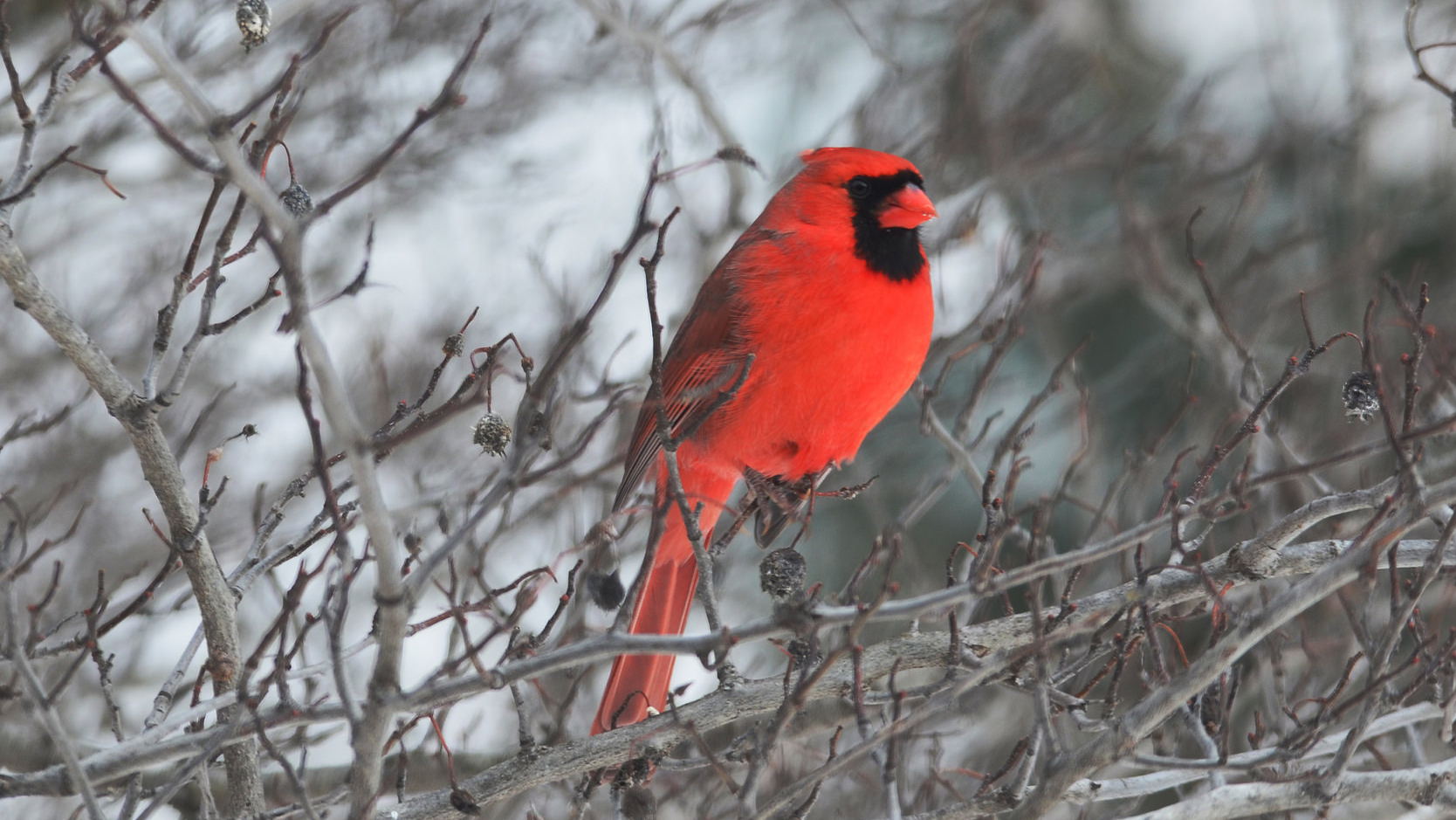
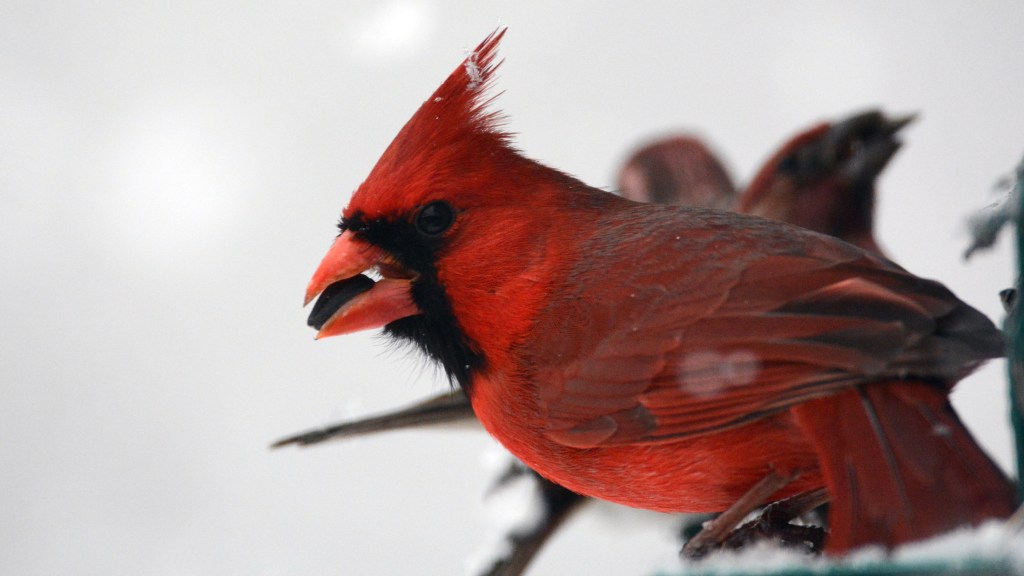



Dear Matthew…I am so encouraged with your news about the Northern Cardinal. For years I had been trying to lure a pair to stick around. Last March (2017) I noticed what I thought was a family of six, 4 males and 2 females—perhaps a family that had fledged the season before. I have five feeders and I have participated in the Cornell Lab ” Feeder Watch Program” for the last two years. I have also been a Nature Conservancy Member, off and on, for the last forty years. This year I noticed a pair of cardinals building a nest in the 25′ Colorado Blue Spruce next to our house ( southern exposure). The other cardinals have also not left. I see many of them at our feeders daily. I am interested in getting the others to nest nearby. Do you have any suggestions? I know that I can’t lure them into a nest box , like the Bluebirds, but what can I do to facilitate nesting for the cardinals I have left? Love your Science Blog! Drop me a line whenever you can—Thanks!
We have been feeding birds, and have seen the number’s of cardinals increase.
Some years ago I had the pleasure of hosting a pair of cardinals for a year or so. Then they disappeared. This year at least one pair has returned and would seem to be nesting in a shrubby area behind my property, though I’ve not been able to see exactly where. Hip, hip, hurray!
Have not seen these doves, but have not seen our grosbeaks for two years now, either. Used to have a lot of them every the winter. I miss them, and have wondered what happened.
I live in northern Minnesota.
Here in Central Florida, Cardinals are regular visitors in our bushes and trees. There is plenty of food available to them even without having birdfeeders. They are beautiful and fascinating to watch.
We have vitex bushes in our yard, and they attract cardinals, as well as blue Jays and sparrows. It’s nice to see how they all get along and share the resource. Bees also like these bushes. Makes you wonder why people can’t take a clue from these birds.
Dates are approximate, but: I recall my late father telling me maybe five decades ago that Dr. Walter Breckenridge, who was once the head of the UMN’s Museum of Natural History, would bring his bird class on a field trip, in about 1925-’30, to see the single pair of cardinals overwintering in the Mpls/St. Paul area, somewhere along the Minnesota River south of Mpls. The “single pair” is what I think I remember after–what–fifty years. Now I’m 75, and we have never lacked a pair of cardinals at our bird feeder here in Stillwater for the past forty years.
Living in the Twin Cities, I’ve noted over the last 20 years that as the cardinal population rises, that the blue jays have all but disappeared in my neighborhood. I love whistling back at the cardinals in the spring and have often engaged in song battles with them until my wife shoos me out of the yard.
I have a pair of Cardinals that I see rarely, although I have seed for them. Lately, the male has been visiting the feeder, but for the first time, without the female. I’ve seen him maybe three times now without the female. Since it’s April, would she be sitting in the nest with eggs maybe? I hope this is the case, because she is my favourite , but also, I worry about the male missing her if she’s not at the nest.
Hi Heather, You can learn more about Cardinal nesting behavior at Cornell Lab of Ornithology’s All About Birds: https://www.allaboutbirds.org/guide/Northern_Cardinal/lifehistory
So glad to have found your site. I’m a backyard birder. Love all those little guys (and gals). Had the sweetest male cardinal for several years. He had no fear. He would follow me from window to window and if he didn’t see me he would fly up against the window to let me know he was around. He would even sit on the windowsill while I was 6 inches from him on the other side of the window. He gave me great joy. I was sad when he no longer was coming, but was happy to have had the pleasure of his company for several years.
This year I am converting my backyard into a wildlife sanc to save the bees and butterflys. I have thirn bushes, other bushes and 2 tall pine treesfrom the droppings of birds. I have a fish pond they can drink from and I’m excited abt this. I also need to send you video of gorgeous lavendar butterfly which landed on my window sill last spring.
I’ve been feeding cardinals (amongst other bird species) for several years now and have had the pleasure of witnessing the parents come back to my yard with their babies in tow. When I first heard that cardinals can help slow the spread of West Nile virus, I made it my mission to do whatever I could promote a long and healthy life for these wonderful creatures.
http://wildlife.org/cardinals-may-protect-atlanta-residents-from-west-nile-virus/
We have a male cardinal coming to our feeder that is completely bald except for two crest feathers in his head. He looks like a little red vulture! He has been patchy bald for weeks and weeks. Is he molting? He looks very strange yet acts very healthy.
My favorite bird! My early years in West Virginia were made better by the regular appearance of the cardinal. Unfortunately, my current rsidence in the Pacific Northwest has shut me out of cardinals. I certainly remember them fondly.
That yellow Cardinal is beautiful! How would poor nutrition change its color, would seem then that we’d see more color variations.
Hi Jim, This article on National Geographic goes into more detail about how diet impacts pigment: https://news.nationalgeographic.com/2018/02/birds-animals-cardinals-rare-yellow-spd/